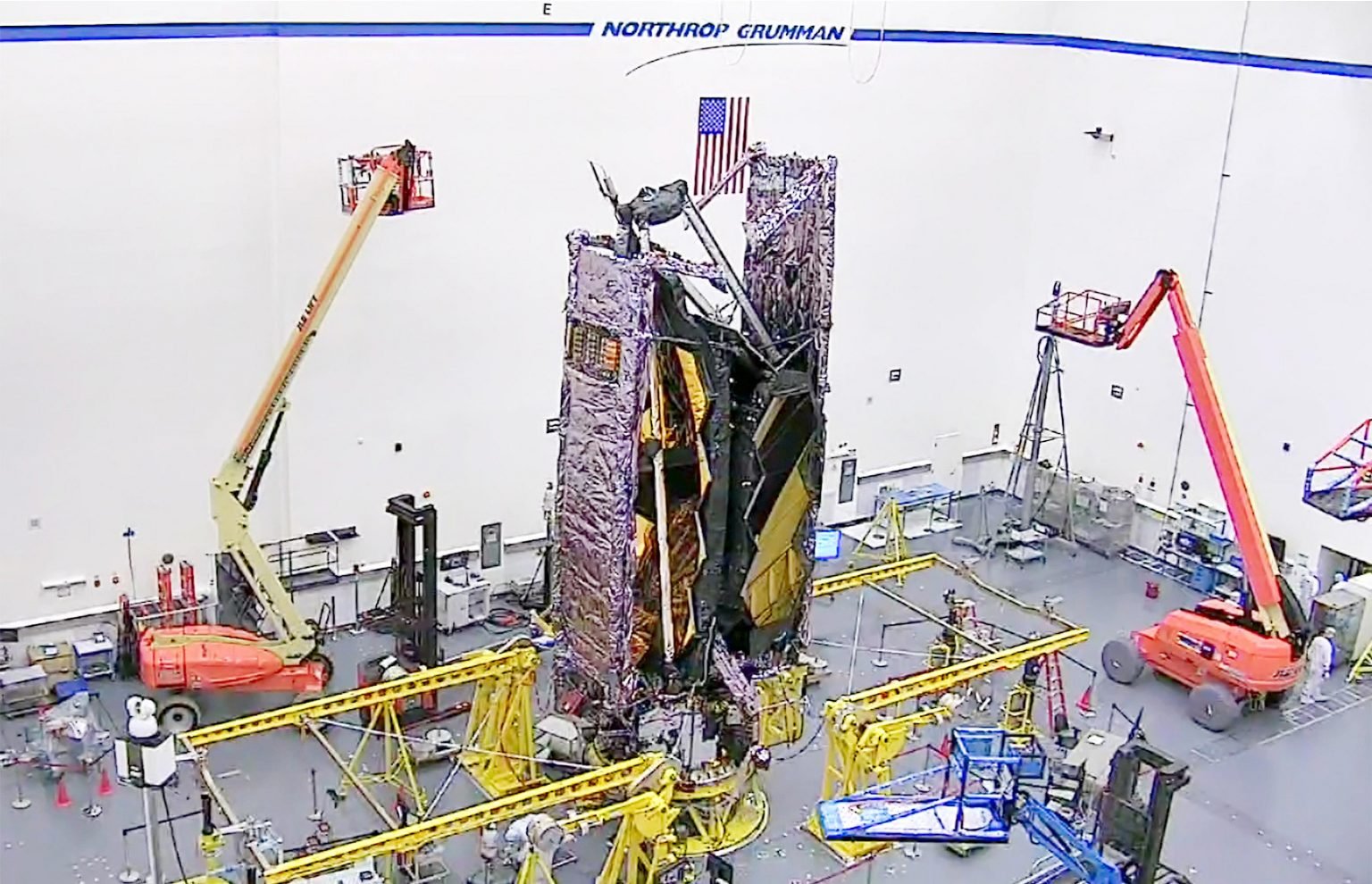
Its 6.6 meter primary mirror-six times the collecting power of the Hubble Space Telescope-is made from beryllium and comprises 18 hexagonal segments, each one covered in a super-thin layer of gold that’s exceptional at reflecting infrared light. Webb also has a giant mirror like nothing else ever sent to space. Infrared light is invisible to the human eye so the light that NIRCam collects is mapped onto the visible spectrum, with filters used to make these incredible images.

MORE FROM FORBES In Photos: See All Of The Webb Telescope's Jaw-Dropping New Images Including A Giant Nebula And Its First 'Deep Field' By Jamie Carter Making the Invisible Visible There’s a vacuum between the layers that acts as an insulator. To sense such faint heat signals, Webb’s instruments are kept on one side that’s kept super-cold side (about -385✯-233✬) by a five-layer, tennis court-sized sun-shield made of kapton. Webb’s real secret weapon is its NIRCam (Near-Infrared Camera), which sees infrared light as heat. It’s ancient light from very distant objects. Infrared light is long wavelength light that we can’t see. The technical side behind Webb’s stunning discoveries comes from the fact that it’s the first-ever space telescope that can capture far-infrared light. NASA, ESA, CSA, Jupiter ERS Team image processing by Judy Schmidt Secret Weapons NIRCam has three specialized infrared filters that showcase details of the planet. “An engineering marvel built by the world’s leading scientists and engineers, Webb has given us a more intricate understanding of galaxies, stars, and the atmospheres of planets outside of our solar system than ever before.”Īuroras and hazes glow in this composite image of Jupiter taken by the James Webb Space Telescope's. “On its first anniversary, the James Webb Space Telescope has already delivered upon its promise to unfold the universe, gifting humanity with a breathtaking treasure trove of images and science that will last for decades,” said Nicola Fox, associate administrator of NASA’s Science Mission Directorate in Washington. They came on the back of some astonishing images of Jupiter in infrared that revealed the giant planet’s incredible storms, cloud bands, faint aurora, rings and tiny moons.

Just a few weeks ago NASA published a stunning image of Saturn in infrared while in May, Webb spied a massive new plume of water vapor spilling into space from the ringed planet’s tiny moon Enceladus. It also broke new ground in our solar system. Webb found its first exoplanet and studied the atmospheres of many alien worlds.

The infrared space telescope’s first year has included several “Webb Deep Field” images that have shown astronomers a first glimpse of galaxies and stars closer to the Big Bang than ever before.


 0 kommentar(er)
0 kommentar(er)
